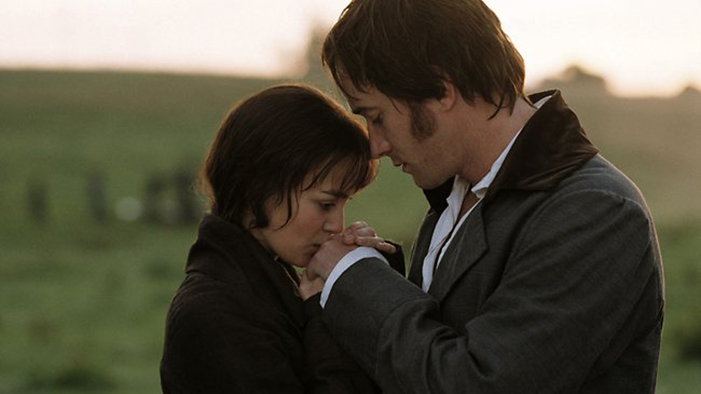Bias is a kind of blindness.
Mr. Henderson, the young county attorney, seems eager to use John Wright’s case to prove himself. An elected official, he speaks with brusque authority but also remembers to court votes “with the gallantry of a young politician.” Mr. Peters, the business-like sheriff, is explicitly tasked with enforcing the law. For both men, the stakes in bringing a successful murder charge are high. Yet their disinterest in and even disdain for the details of women’s lives keep them from seeing the clues in front of them. Both men seem to be looking for some major catalyst toward violence. It doesn’t occur to them that years of loneliness and neglect might build to a breaking point, and that the trigger might have been quite small, a proverbial “last straw” that led to an unexpected outcome. They see the birdcage, for example, but they do not note, as the women do, the broken door and bent hinge, so they miss a crucial clue.
Interestingly, Mr. Hale, who is involved in the investigation only because he happened to stop by the Wrights’ house the morning after the murder, seems to be less hindered by the bias that blinds the other men to the clues they need. He is sensitive to how isolated the farmhouse is, for example, and he knows that “all the women-folks liked the telephones” for staying connected. Mr. Hale grasps, even if he can’t explain it exactly, that Minnie’s “pleatin’ at her apron” is significant. He mentions this action four times, and the narrator echoes it as well. This apparently minor detail stays with Mrs. Hale, but it means nothing to the attorney. He is looking for something to indicate strong emotion but doesn’t see, or perhaps cannot take seriously, the behavior that strikes both Mr. and Mrs. Hale as telling.
Much of life’s meaning is found in daily joys and sorrows.
“A Jury of Her Peers” is a mystery and a character study, but it also functions as a “slice of life” story. Fiction—whether created to be read, as a story, or to be viewed, as a play—that takes a “slice of life” approach presents details about daily life in a matter-of-fact way. This realistic approach doesn’t comment on or judge the mundane details of characters’ lives but instead uses the details as a backdrop for human action and speech. Glaspell’s first job was as a journalist, and her eye for realistic detail shapes readers’ perceptions of the characters’ experiences.
The characters are like normal people. They’re not heroes or people of importance, beyond their little town and farmland. They aren’t tasked with saving the world or answering profound questions. Mrs. Hale, the most completely developed character, takes pleasure in doing her work well and is irritated when she must leave it undone. She turns back for a warm scarf when she feels the cold and worries that her son, Harry, didn’t dress warmly enough that morning. She appreciates good stitching on quilt pieces, commiserates with Minnie in spirit over a bad stove, and thinks it would be a kindness to let Minnie take comfort in the lie that her jars of fruit are fine. She knows that Minnie delighted in small things—a songbird, bright-colored ribbons, a pretty box, and a piece of silk. None of these details are uncommon or unexpected, yet they along with other details in the story convey the idea that the little things of life, good and bad, go far to determine whether people are content and feel useful. This is why, when John Wright violently destroys the last little thing that made Minnie’s quiet life tolerable, she snaps and strangles him in his sleep.
People should help bear each other’s burdens.
“A Jury of Her Peers” develops the idea, mainly through the character of Martha Hale, that people have to look after one another and that neighborly care can prevent despair. Mrs. Hale acknowledges, early in the story, that she could and should have visited Minnie, her girlhood friend, more often. She vividly recalls Minnie Foster, the lively girl who sang in the choir, and describes her to Mrs. Peters so that she can get a sense of the woman whose kitchen they are in as well. Mrs. Hale is well aware that Minnie rarely comes to town now, and she says that it has been at least a year since she saw Minnie in person. Her remorse over having stayed away from the Wrights’ cheerless house builds as she comes to understand that Minnie killed her husband and why. The one bit of company Minnie had—a bird, of all things—had sustained her. Martha Hale painfully realizes how much more friendly visits would have helped. She accuses herself directly of the “crime” of having “lived neighbor” to Minnie for years and yet having “let her die for lack of life.”
Mrs. Peters gradually comes to feel this sympathy as well. She recalls times in her past when she had to carry on alone, especially after the death of her first child, “and me with no other then—.” When Mrs. Hale points out that people “all go through the same things” and should help bear each other’s burdens, Mrs. Peters’ thinking about the bird suddenly shifts. She claims that the men would probably laugh if they saw the women “stirred up” about the canary, suggesting that there’s no need to tell them. By hiding the clue, the women keep Minnie from certain judgment.


 payment page
payment page



